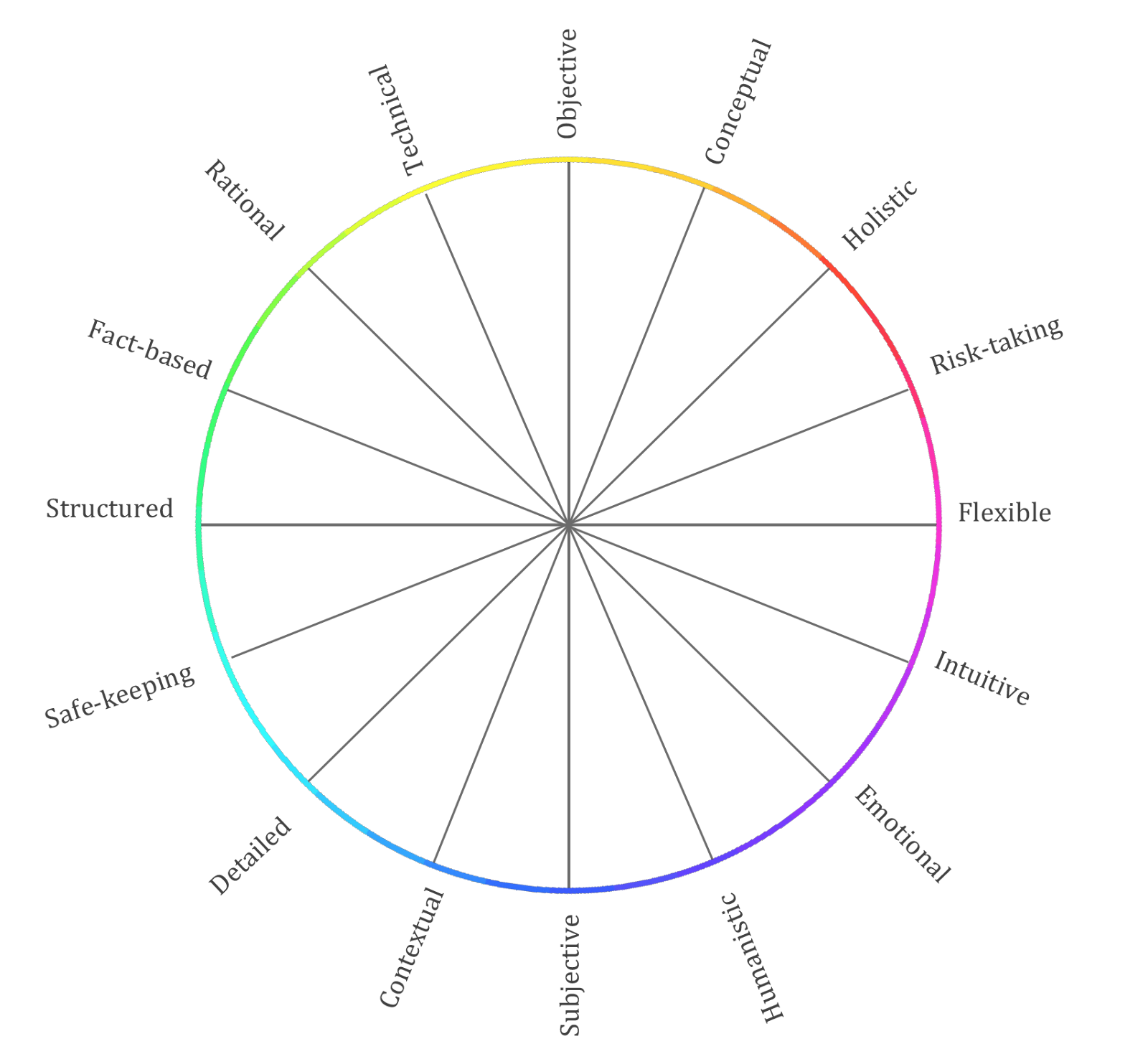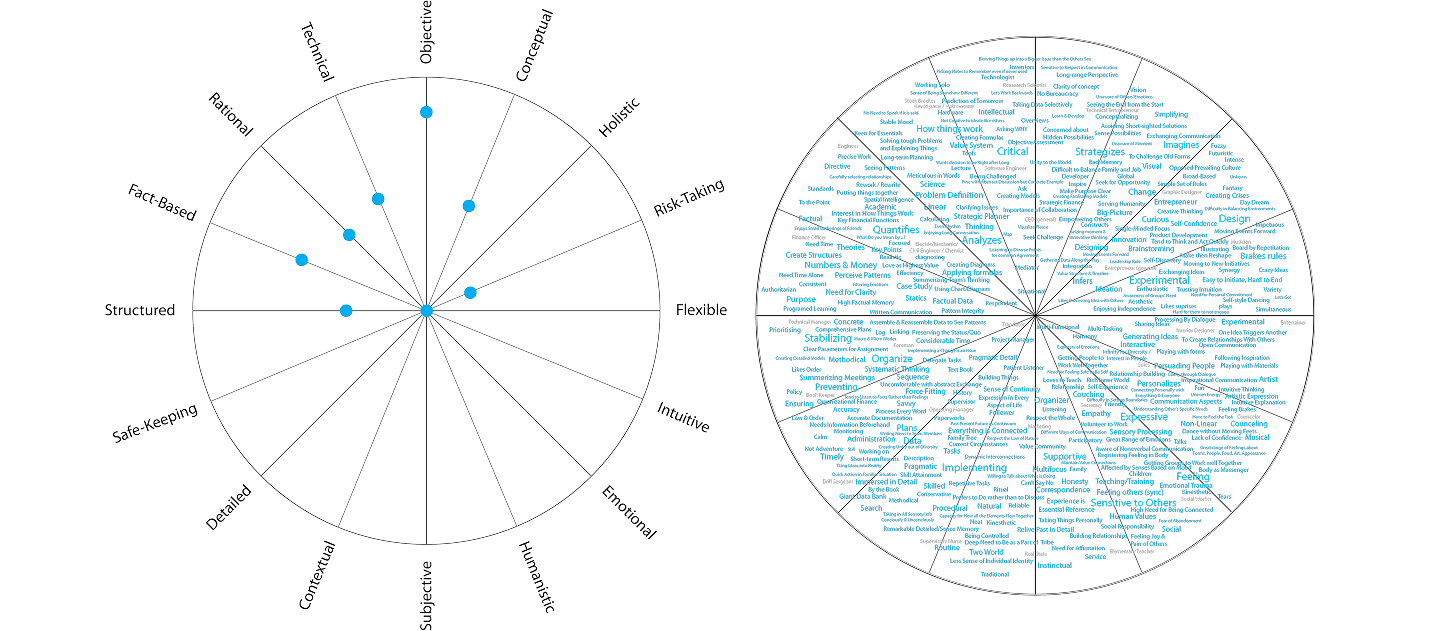



The Preferences Model is a research-based framework that helps individuals and teams understand how people think, interact, and execute in real time. Unlike personality models that assign static categories or types, the Preferences Model is built on the idea that human behavior is context-dependent, fluid, and often misunderstood when viewed through rigid typologies. It offers a structured yet flexible way to observe, interpret, and align cognitive diversity in professional environments.

Developed through a scientific design process by Pouria Kay, the Preferences Model draws from over a decade of interdisciplinary research, including cognitive science, communication studies, systems thinking, and organizational behavior. Rather than replicate or repackage existing personality frameworks, it synthesizes the recurring patterns found across academic models and translates them into a practical, real-time tool.

Originally proposed in 2011 and initially tested through thousands of samples in practical applications through 2012 and 2013, the model has since evolved through coaching, leadership development, organizational transformation, and educational use. Its core structure remains solid, while new applications and methods of use continue to be refined through ongoing fieldwork and research collaborations.
The Preferences Model is not a diagnostic tool, an assessment, or a personality test. It does not rely on questionnaires or attempt to categorize individuals into predefined boxes. Instead, it is a sense-making framework that surfaces how people prefer to process information and naturally approach thinking, learning, relating, and decision-making. The model reveals the inherent strengths and weaknesses of different thinking styles, which can then be leveraged for potential synergies when collaborating with others.
Key characteristics:
The model enables leaders to identify how individuals engage with work modes such as visioning, structuring, empathizing, and activating. Instead of viewing differences as misalignment, leaders can use these insights to design better meetings, project flows, communication rhythms, and decision-making processes. For instance, someone with a preference for conceptual thinking may thrive when brainstorming a product vision, while a colleague strong in structural execution may bring essential grounding to delivery planning. This visibility unlocks productive tension rather than letting it evolve into conflict.

Most tools describe individuals in isolation, placing them into boxes of types. But teamwork happens in interactions where tension exists between different ways of thinking. The Preferences Model doesn’t just show how people think on their own. It reveals what happens when diverse minds meet, and how those differences become a source of strength, friction, or both. Therefore, it helps teams and leaders make better decisions more quickly, without requiring everyone to think alike.
Teams often face recurring challenges not because of a lack of skill or effort, but because of unacknowledged differences in thinking and communication. These differences, when not recognized or understood, lead to friction, delayed decisions, mistrust, and wasted resources.
The Preferences Model helps teams and leaders:
By working with the underlying thinking preferences rather than surface-level behavior, the model enables change that is deeper and more sustainable, creating a strategic asset within an organization.
The Preferences Model has been successfully used in a wide range of contexts:
It is especially valuable in fast-paced or high-stakes environments, where alignment and communication must happen quickly and under pressure. In leadership coaching, the model is often used to help founders reflect on how their dominant preferences might create blind spots in their delegation or handling of tension with co-founders. In product strategy, it helps teams avoid groupthink by intentionally incorporating diverse thinking approaches. It also enables them to devise better strategies and product designs that satisfy a wider range of users with varying thinking styles. During organizational change, it is used to anticipate where resistance may surface and why communication may be received differently across stakeholder groups, or how it will affect their performance.

The Preferences Model continues to develop through active academic and professional partnerships. Current research is exploring new applications in coaching, team building, leadership development, and intelligent systems, including AI-supported tools. The model’s real-time, dynamic nature makes it well-suited for complex, rapidly evolving settings where traditional static tools often fall short.
In a world that demands faster adaptation, deeper collaboration, and better execution, especially with the increasing automation enabled by AI, understanding how people think is no longer optional. It is essential. The Preferences Model offers a practical, respectful, and research-grounded approach to making thinking diversity visible and usable.
It is not about labeling people. It is about seeing them clearly, working together effectively, and producing outcomes that exceed expectations.
For those interested in researching or applying the model in academic or organizational settings, InnerEdge Oy is the primary facilitator of the model and welcomes inquiries and collaborations. For more information or to explore opportunities, visit inneredge.fi.
